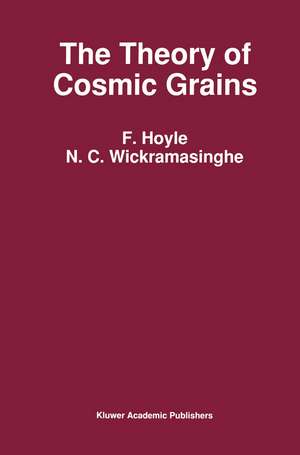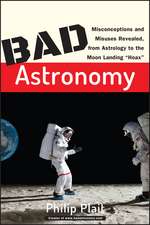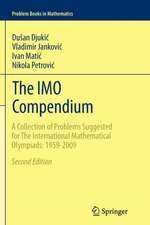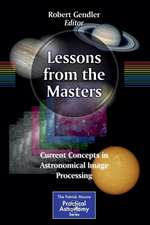The Theory of Cosmic Grains: Astrophysics and Space Science Library, cartea 168
Autor N.C. Wickramasinghe, B. Hoyleen Limba Engleză Hardback – 31 oct 1991
| Toate formatele și edițiile | Preț | Express |
|---|---|---|
| Paperback (1) | 945.79 lei 6-8 săpt. | |
| SPRINGER NETHERLANDS – 24 sep 2012 | 945.79 lei 6-8 săpt. | |
| Hardback (1) | 951.91 lei 6-8 săpt. | |
| SPRINGER NETHERLANDS – 31 oct 1991 | 951.91 lei 6-8 săpt. |
Din seria Astrophysics and Space Science Library
- 24%
 Preț: 799.10 lei
Preț: 799.10 lei - 15%
 Preț: 647.92 lei
Preț: 647.92 lei - 18%
 Preț: 983.81 lei
Preț: 983.81 lei - 18%
 Preț: 790.28 lei
Preț: 790.28 lei -
 Preț: 359.86 lei
Preț: 359.86 lei -
 Preț: 389.71 lei
Preț: 389.71 lei - 20%
 Preț: 691.14 lei
Preț: 691.14 lei - 20%
 Preț: 816.18 lei
Preț: 816.18 lei - 18%
 Preț: 1011.27 lei
Preț: 1011.27 lei -
 Preț: 402.56 lei
Preț: 402.56 lei - 15%
 Preț: 664.93 lei
Preț: 664.93 lei -
 Preț: 398.15 lei
Preț: 398.15 lei - 18%
 Preț: 954.77 lei
Preț: 954.77 lei -
 Preț: 411.04 lei
Preț: 411.04 lei - 18%
 Preț: 1225.31 lei
Preț: 1225.31 lei - 18%
 Preț: 1843.29 lei
Preț: 1843.29 lei -
 Preț: 393.13 lei
Preț: 393.13 lei -
 Preț: 400.26 lei
Preț: 400.26 lei - 18%
 Preț: 953.82 lei
Preț: 953.82 lei - 18%
 Preț: 960.61 lei
Preț: 960.61 lei -
 Preț: 398.35 lei
Preț: 398.35 lei -
 Preț: 390.84 lei
Preț: 390.84 lei -
 Preț: 413.76 lei
Preț: 413.76 lei -
 Preț: 416.64 lei
Preț: 416.64 lei - 18%
 Preț: 947.67 lei
Preț: 947.67 lei -
 Preț: 404.51 lei
Preț: 404.51 lei - 18%
 Preț: 956.50 lei
Preț: 956.50 lei -
 Preț: 403.75 lei
Preț: 403.75 lei - 18%
 Preț: 1229.40 lei
Preț: 1229.40 lei - 18%
 Preț: 1224.99 lei
Preț: 1224.99 lei -
 Preț: 404.29 lei
Preț: 404.29 lei - 15%
 Preț: 654.77 lei
Preț: 654.77 lei - 18%
 Preț: 1248.20 lei
Preț: 1248.20 lei - 18%
 Preț: 955.25 lei
Preț: 955.25 lei - 18%
 Preț: 1846.28 lei
Preț: 1846.28 lei - 18%
 Preț: 1233.06 lei
Preț: 1233.06 lei - 18%
 Preț: 1234.77 lei
Preț: 1234.77 lei
Preț: 951.91 lei
Preț vechi: 1160.86 lei
-18% Nou
Puncte Express: 1428
Preț estimativ în valută:
182.15€ • 194.78$ • 151.87£
182.15€ • 194.78$ • 151.87£
Carte tipărită la comandă
Livrare economică 18 aprilie-02 mai
Preluare comenzi: 021 569.72.76
Specificații
ISBN-13: 9780792311898
ISBN-10: 0792311892
Pagini: 307
Ilustrații: IX, 307 p.
Dimensiuni: 155 x 235 x 19 mm
Greutate: 0.63 kg
Ediția:1991
Editura: SPRINGER NETHERLANDS
Colecția Springer
Seria Astrophysics and Space Science Library
Locul publicării:Dordrecht, Netherlands
ISBN-10: 0792311892
Pagini: 307
Ilustrații: IX, 307 p.
Dimensiuni: 155 x 235 x 19 mm
Greutate: 0.63 kg
Ediția:1991
Editura: SPRINGER NETHERLANDS
Colecția Springer
Seria Astrophysics and Space Science Library
Locul publicării:Dordrecht, Netherlands
Public țintă
ResearchCuprins
1. Introduction.- 1.1. Early Ideas.- 1.2. Trumpler’s Method of Estimating Interstellar Extinction.- 1.3. The First Colour Measurements.- 1.4. The Oort Limit.- 1.5. Data Relating to Interstellar Clouds.- 1.6. Correlation Between Gas and Dust Clouds.- 1.7. Composition of Grains.- 2. Electromagnetic Properties of Small Particles.- 2.1. Homogeneous Spherical Particles.- 2.2. Composite Spheres.- 2.3. Infinite Cylinders.- 2.4. Rayleigh Scattering by Ellipsiods.- 2.5. Heterogeneous or Porous Grains.- 2.6. Absorption Cross—sections, Bulk Absorption Coefficient and Emissivity.- 2.7. Two Special Cases.- 3. Interstellar Extinction and Polarisation.- 3.1. Equation of Transfer.- 3.2. Observations of Interstellar Extinction, Definition of Colour Indices and Colour Excesses.- 3.3. Observations of Interstellar Polarisation.- 3.4. Diffuse Interstellar Bands.- 4. Reflection Nebulae and the Diffuse Galactic Light.- 4.1. Introductory Remarks.- 4.2. Apparent Size of Reflection Nebulae.- 4.3. Observations of NGC 7023.- 4.4. Observations of Reflection Nebula Around Merope.- 4.5. Multiple Scattering Models of Reflection Nebulae.- 4.6. Diffuse Galactic Light.- 5 Interactions between Dust, Gas and Radiation.- 5.1.Introductory Remarks.- 5.2. Grain Temperatures for Sandard Grains.- 5.3.Temperature Spikes in Very Small Grains.- 5.4.Electrostatic Gharge on Grains.- 5.5.Rotation of Grains.- 5.6.Radio Waves from Grains.- 5.7.Molecule Formation.- 5.8. Growth and Destruction of Grains.- 5.9. Effects of Radiation Pressure.- 5.10. Gyration About the Magnetic Field.- 5.11. Alignment of Grains.- 5.12. Depletion of Elements from the Gas Phase.- 6. Inorganic Theories of Grain Formation.- 6.1. Interstellar Condensation.- 6.2. Condensation of Graphite Grains.- 6.3. Condensation of Grains in CoolOxygen—rich Giant Stars.- 6.4. Core—mantle Grains.- 7. The Organic Grain Model.- 7.1. Introductory Remarks.- 7.2. Polymerisation of Formaldehyde.- 7.3. From Formaldehyde to Polysacharides.- 7.4. Polysacharide Formation in Stellar Mass Flows.- 7.5. HAC, PAH and QCC Models.- 7.6. Fischer Tropsch Reactions in the Gas Phase.- 7.7. The Biological Grain Model.- 8. Models of the Extinction and Polarisation of Starlight.- 8.1. Introduction.- 8.2. The Visual Extinction Curve.- 8.3. The Ultraviolet Extinction Curve: Extinction Curves for Graphite Grains.- 8.4. Polarisation Constraints.- 8.5. An Organic/Biologic Grain Model.- 8.6. Analysis of a Biological Grain Model.- 8.7. Refinements to Biological Extinction Model.- 9. Spectroscopic Identifications.- 9.1. Introduction.- 9.2. The 8 – 13µm Features in Astronomy.- 9.3. The 8 – 40µm Flux from the Trapezium Nebula.- 9.4. The 3.4µm Band: Proof that Grains are Mainly Organic.- 9.5. Modelling the 2.9 – 4µm IR Data for GC-IRS7.- 9.6. How Much Water — Ice?.- 9.7. Sources with Spectra in the 2 – 14µm Waveband.- 9.8. Evidence for PAH.- 9.9. Aromatic Molecules and the Diffuse Optical Bands.- 10. Dust in External Galaxies.- 10.1. Introduction.- 10.2. The Magellanic Clouds: LMC and SMC.- 10.3. M82 and Other Galaxies.- 10.4. Particles of High Infrared Emissivity.- 10.5. The Ejection of Iron Whiskers from Galaxies.- 10.6. The Microwave Background.















